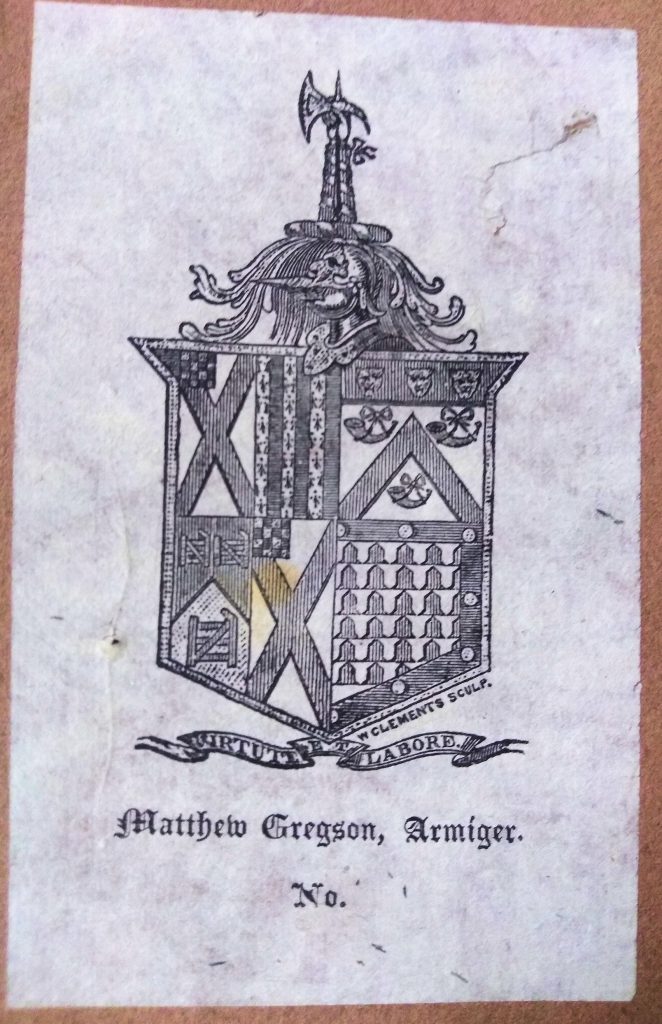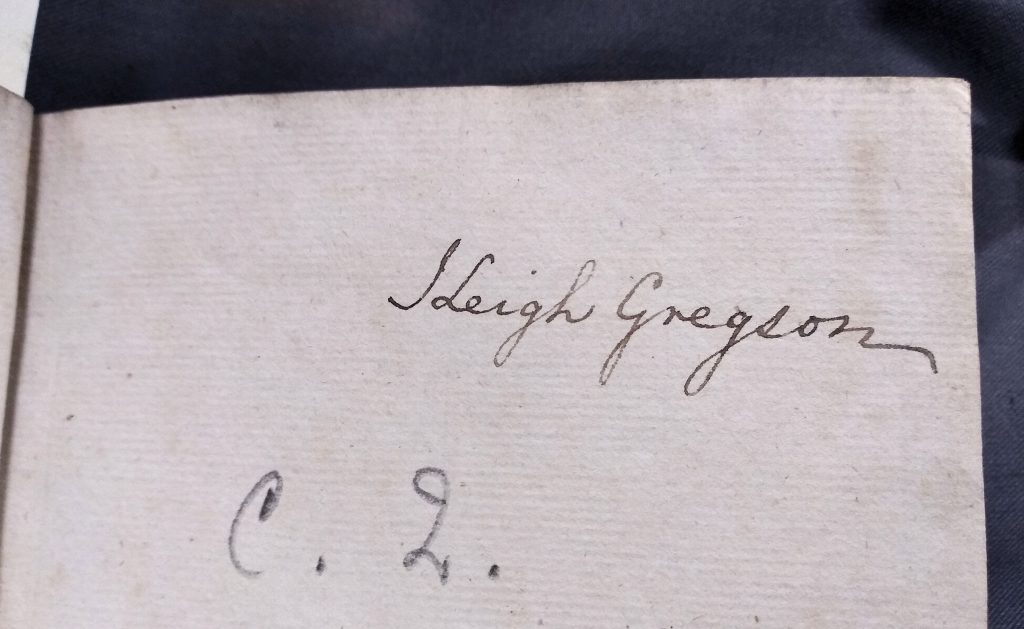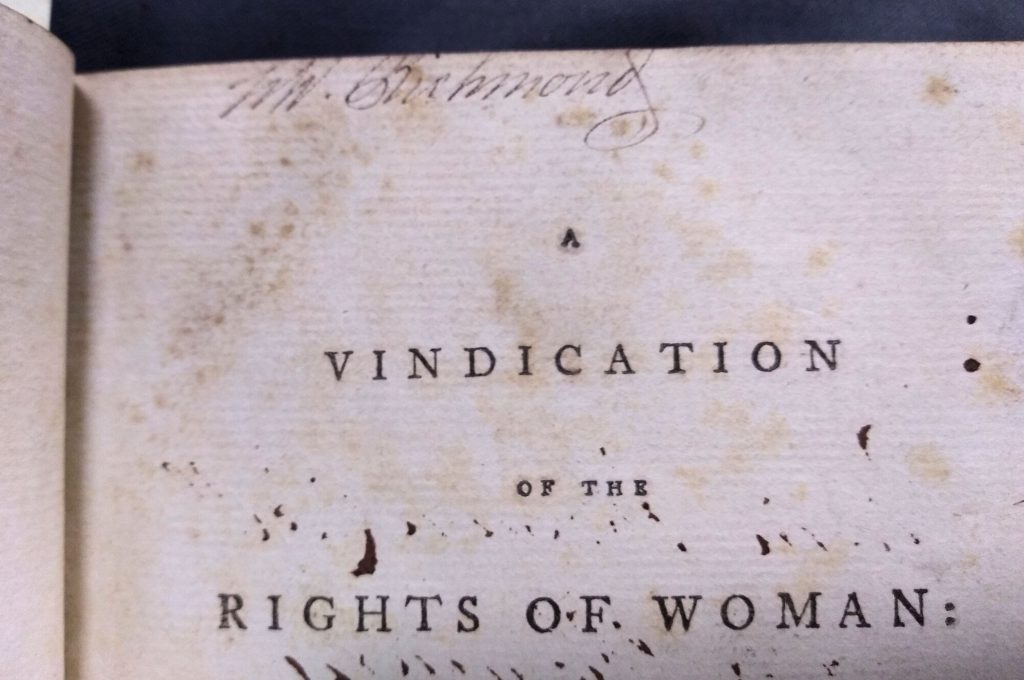This post was written by 2nd year History Lessia Mbala. Lessia is currently undertaking a placement in Special Collections and Archives, recording provenance in The Gregson Memorial Institute Library.
The second semester of second year is often seen as entering the second half of one’s degree; with the end of the degree looming came the panic of what to do after graduation, as well as academic expectation and performance. The History in Practice module, to me, encompassed all of this — a basis in academia with a focus on transferable skills, such as time management, organisation, and the all-important knowledge of how to use Microsoft Excel.

The Gregson Institute is my assigned project. Named after Matthew Gregson, an antiquary with contemporarily peculiar focus on his local and native Liverpool, the Gregson Memorial Institute was created to be a museum, gallery, and place for lectures. His collections, both the ones featured in the Gregson Memorial Institute and his private one, were later donated to the University, his artwork finding a home in the Victoria Gallery and Museum and his books in the Special Collections and Archives. The aim then, in the Special Collections and Archives, is to use the provenance of these books to paint a picture of Late Victorian Liverpool.
With most, if not all, of my previous experience of history being essay writing, date memorising and argument creating, this task was daunting. However, the more I filtered through the collection, the more patterns I recognised and the more familiar the names became. Amongst Gregson’s collection was a copy of A Vindication of the Rights of Women. The title, and its author, Mary Wollstonecraft, was instantly recognisable. Published in 1792, Vindication was initially a rebuttal against Edmund Burke’s argument for the failure of the French Revolution, and is seen to be the first book to argue for total equality of rights between the genders. With its focus on education, Vindication is also seen to be an important piece when studying the Enlightenment as it carries key themes and ideas.
The fact that the book was still being read in late Victorian period only corroborates what is already known about Wollstonecraft: she is a figure in feminist history whose reputation has lasted, and Vindication is a timeless piece of feminist philosophy. However, the provenance of the book gives us information about Wollstonecraft’s interaction with the period.


First, the book, according to the written script within the first few pages, had two owners: I. Leigh Gregson and W.W. Richmond. The gender of these individuals are not immediately obvious from their initials, and their identity is something I am still piecing together as I go through the collection. Their surname, however, provides information about their family and their position in society: the maternal Leigh family was one of gentry and the Gregson, the paternal, were esteemed. This follows historical trends in education: it came to those who could afford it. Priority often went to boys. In fact women were expected to remain uneducated as it was unnecessary to their role as a mother/caregiver. This included governesses, whose education was only officially formalised in 1848 with the formation of Queen’s College. Furthermore, the Victorian era provided many dominant women, such as mathematician Ada Lovelace and nurse Florence Nightingale, who have come to be celebrated as pioneers in their field. Notably, however, these women came from families ranging from fairly wealthy middle class to the aristocratic. It is unknown as of this moment who W.W. Richmond was and his relationship with the Gregson family.

Second, within the book (p. 318) is a highlighted passage on female modesty and purity, and education’s contribution to this. Here, Wollstonecraft argues that, with education, a woman would know and understand the reason for such strict social restrictions, which would result in a more virtuous woman. The context as to why this passage was highlighted is unknown — who, why, under what circumstances? What is clear, however, is that female modesty was indeed being considered. I found this to be the most interesting. The feminist movement, at least by today’s definition, has been synonymous with sexual freedom and lack of judgement. This passage, however, argues in line with sexual constraint. It could be that Vindication, at its core, is an argument and so Wollstonecraft is adopting the social view of women at the time to push her point of view forward. However, it seems to me that sexual freedom wasn’t being discussed when there were more pressing issues in regards to female equality that needed to be addressed. Victorian England — and so Liverpool — is noted for its taboo-isation of the female figure; this passage being highlighted, then, is suggestive of society’s advancement (in that women were becoming individuals rather than property, an Enlightened thought) and its limitations. Moreover, female chastity was pursued more so in the upper classes than in the lower.
Spotting Wollstonecraft had made me aware of many things when cataloguing a collection; most importantly, however, it had shown me just how much a personal item contributes to forming a picture of the past.